Section 8: Basic Driving
Parking
You must ensure that your vehicle is not a hazard when parked. Always park in a marked parking area. When parking along the road, park your vehicle as far from traffic as possible. If there is a curb, park close to it. In the interest of public safety, there are several places where you are not allowed to park:
- On a sidewalk.
- In front of a public or private driveway.
- In an intersection.
- On a crosswalk.
- Alongside or opposite any street excavation or obstruction when stopping or parking would block traffic.
- On the roadway side of any vehicle stopped or parked at the edge or curb of a street (no double parking.)
- On any bridge or other elevated highway structure or in a highway tunnel.
- At any place where official signs prohibit stopping.
- On the shoulder of any interstate highway—these areas may be used only if your vehicle breaks down or you are in physical distress.
- Red-painted curbs or red zones.
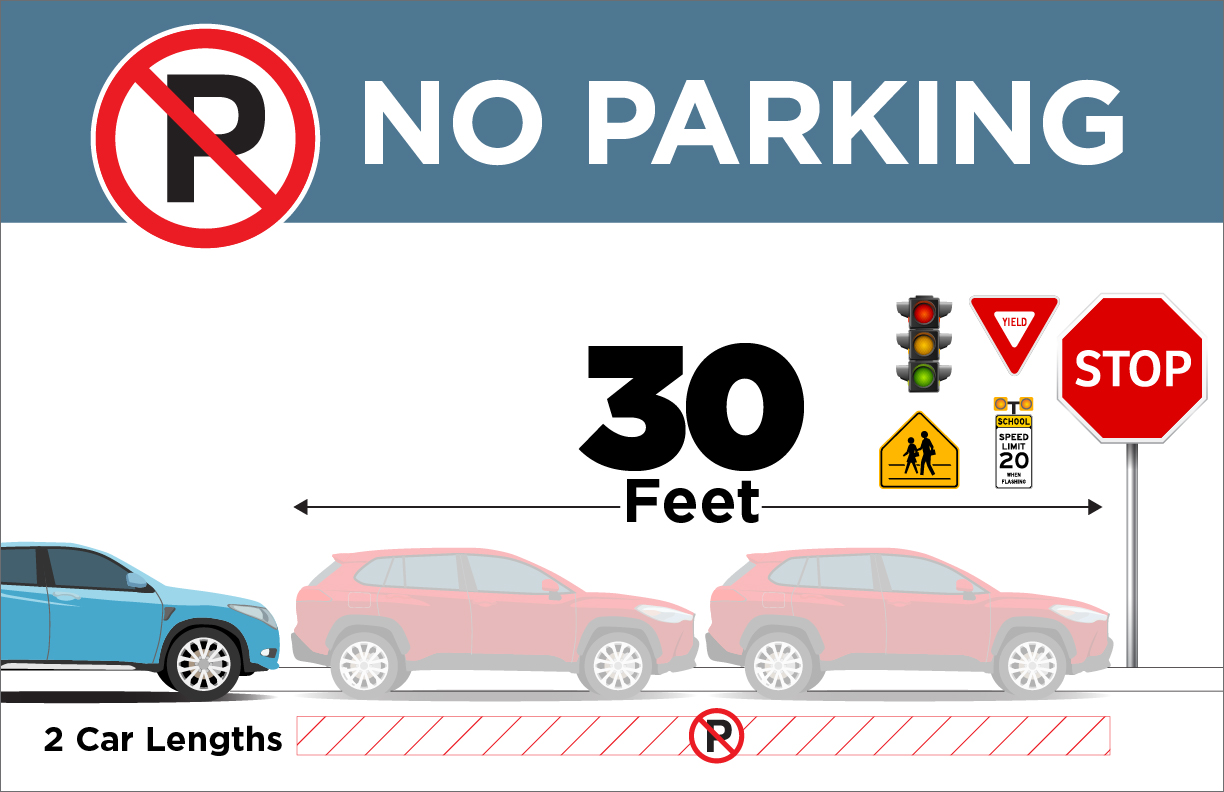
Within 30 feet of any flashing beacon, stop sign, yield sign, or traffic control signal.
View larger image
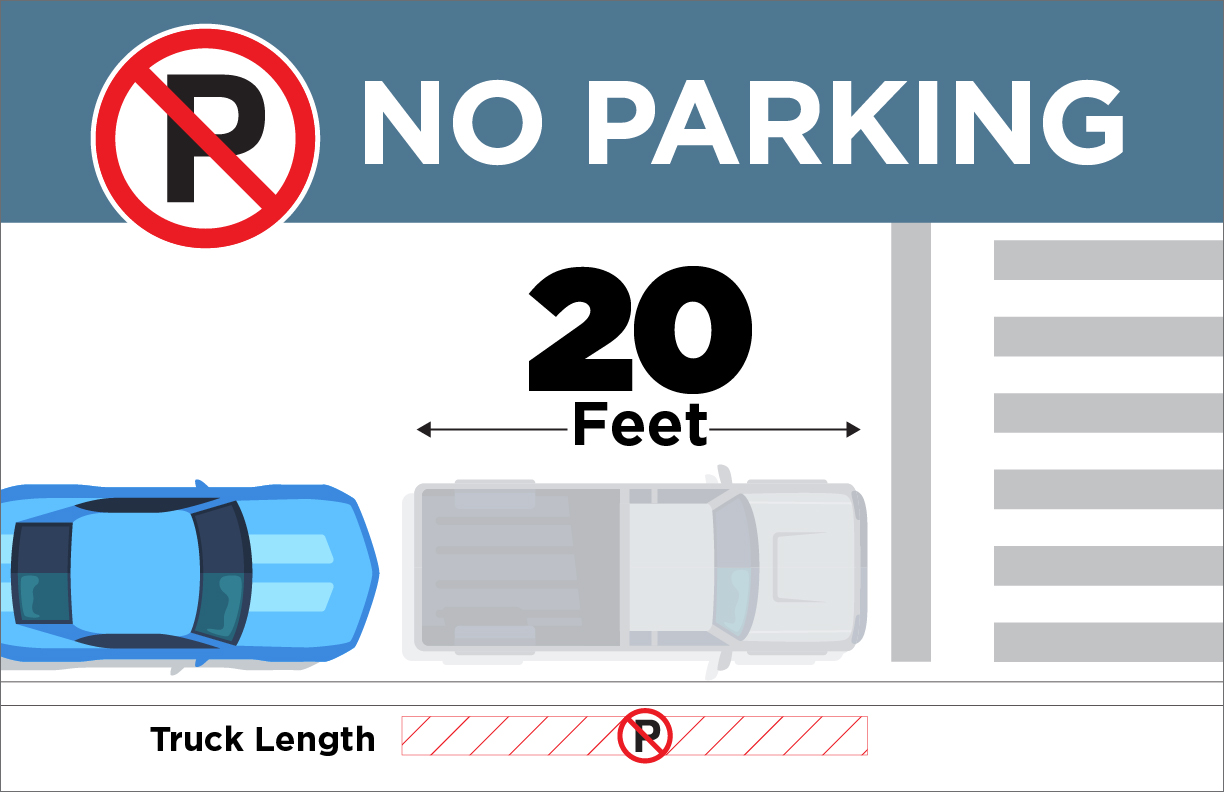
Within 20 feet of a crosswalk.
View larger image

On any railroad track or within 50 feet of the nearest rail of a railroad crossing.
View larger image
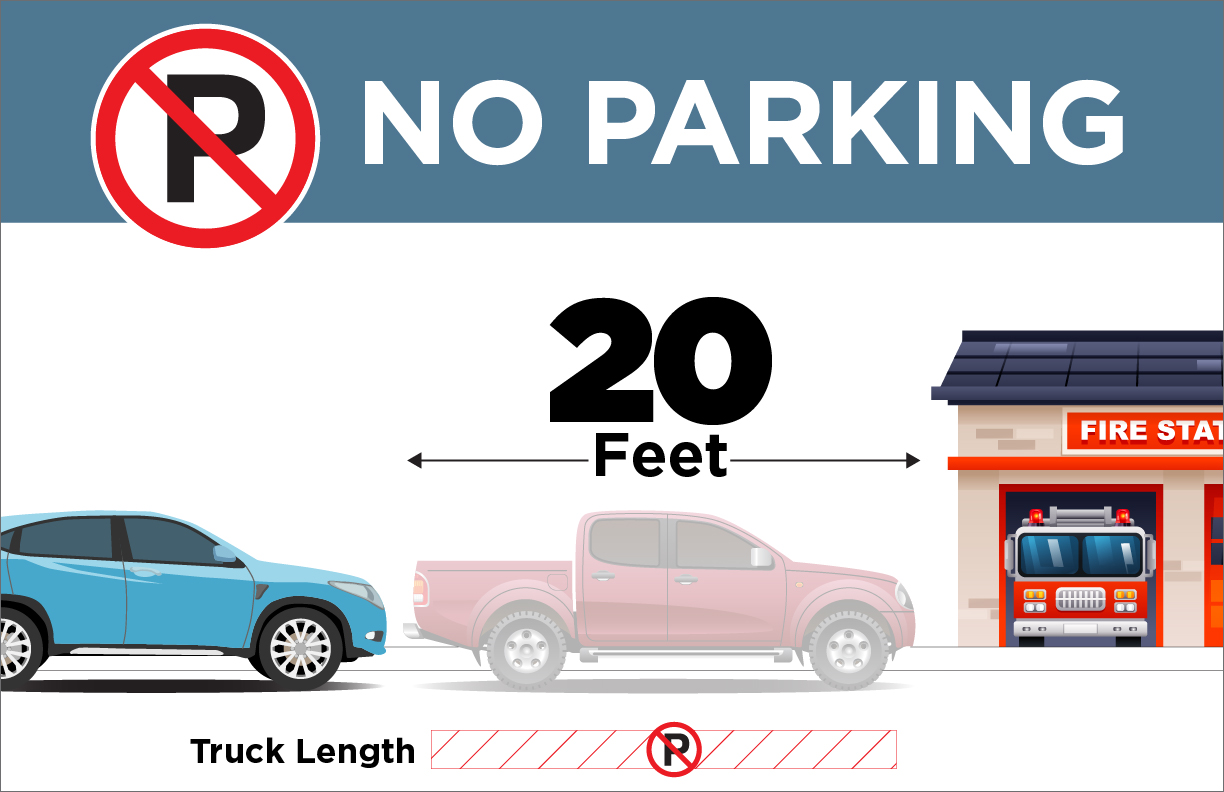
Within 20 feet of the driveway entrance to any fire station, if signs are posted, you may not park on the opposite side of the road if you are within 75 feet of the fire station entrance.
View larger image
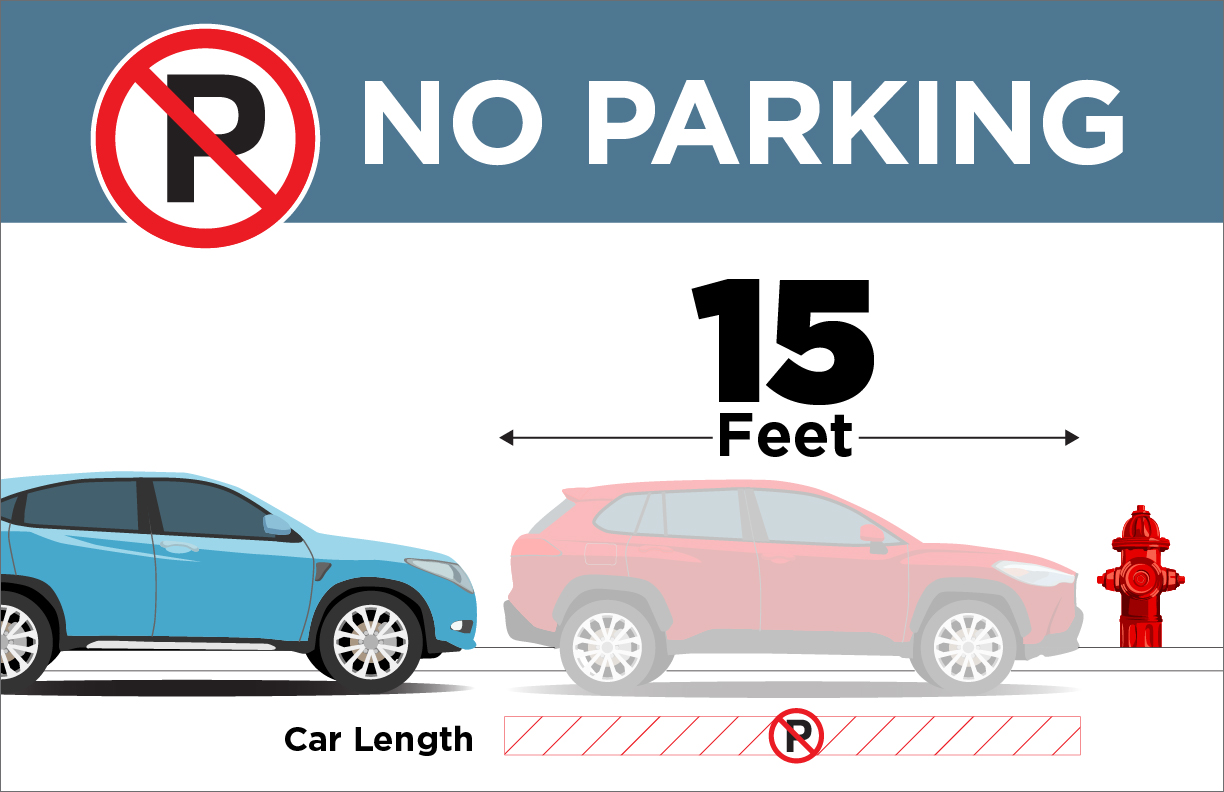
Within 15 feet of a fire hydrant.
View larger image
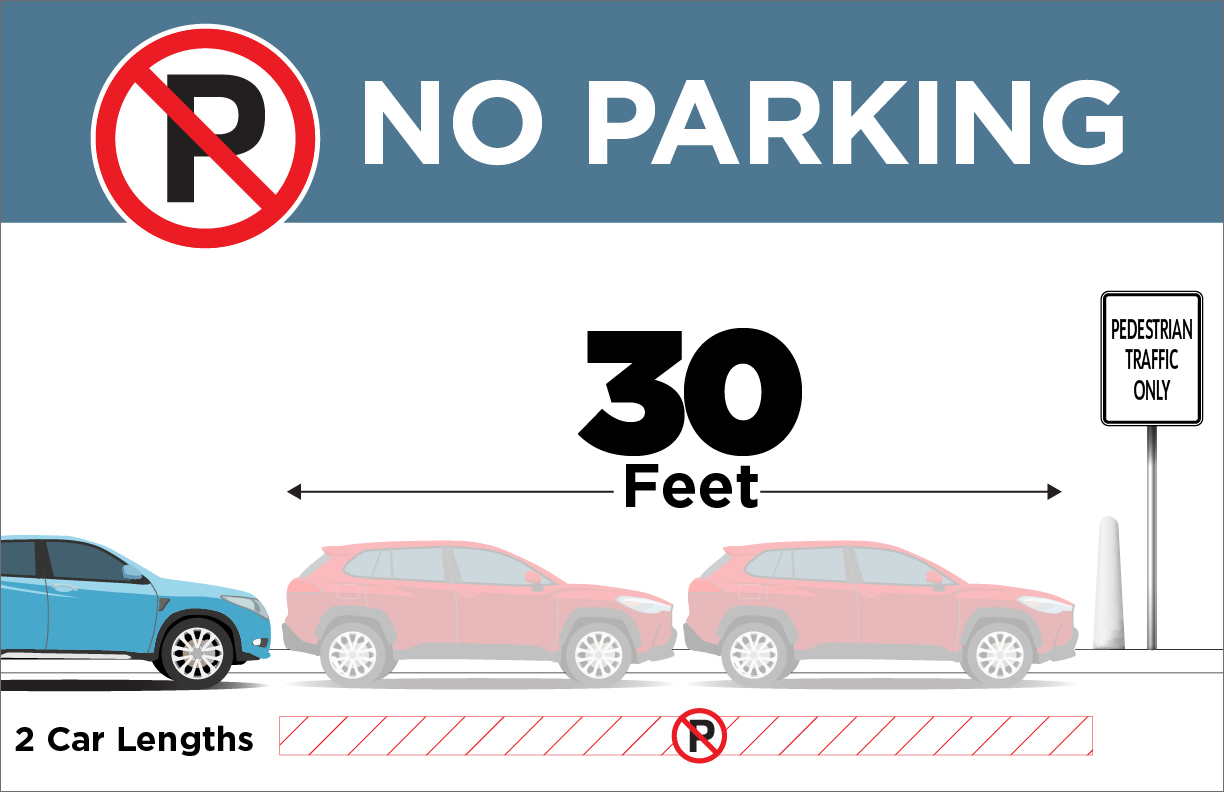
In an area posted for pedestrian use or within 30 feet of the edges of that area.
View larger image
Hill Parking
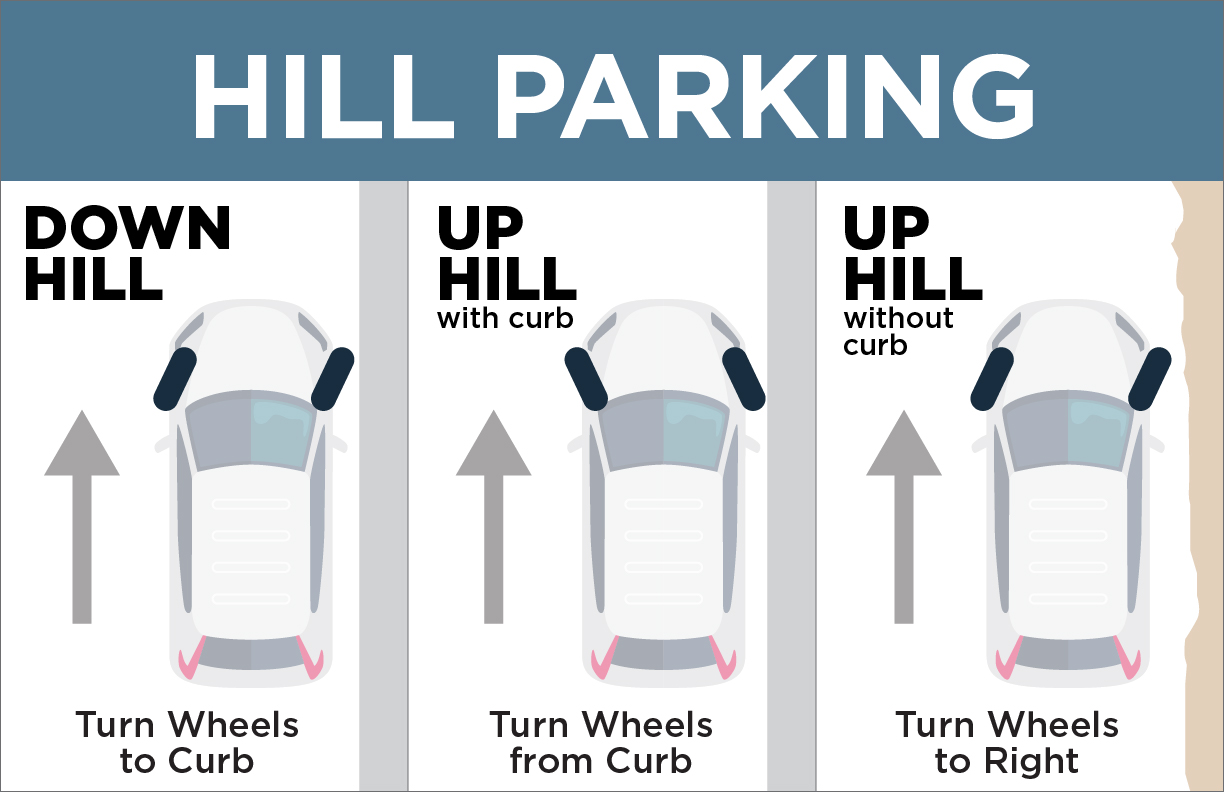
TO DOWNHILL PARK:
- Signal to the right as you approach the curb.
- Perform a head check over your right shoulder and pull parallel to the curb.
- Turn your wheel toward the curb, ensuring your front tire touches the curb to secure the vehicle’s position.
- Put the vehicle in park and set the parking brake.
TO UPHILL PARK:
- Signal to the right as you approach the curb.
- Perform a head check over your right shoulder and pull parallel to the curb.
- Turn your wheel away from the curb while ensuring vehicle’s front tire touches the curb to secure the vehicle’s position (without a curb turn the wheel to the right.)
- Put the vehicle in park and set the parking brake.
Never leave your vehicle until you have set the parking brake, stopped the motor, and locked the doors. Pull as far off the road as reasonable to park. If parking next to a curb, the back wheel of your car must be no further than 12 inches away from the curb. If your parking would block the flow of traffic, find another place to park.
No Parking Zones
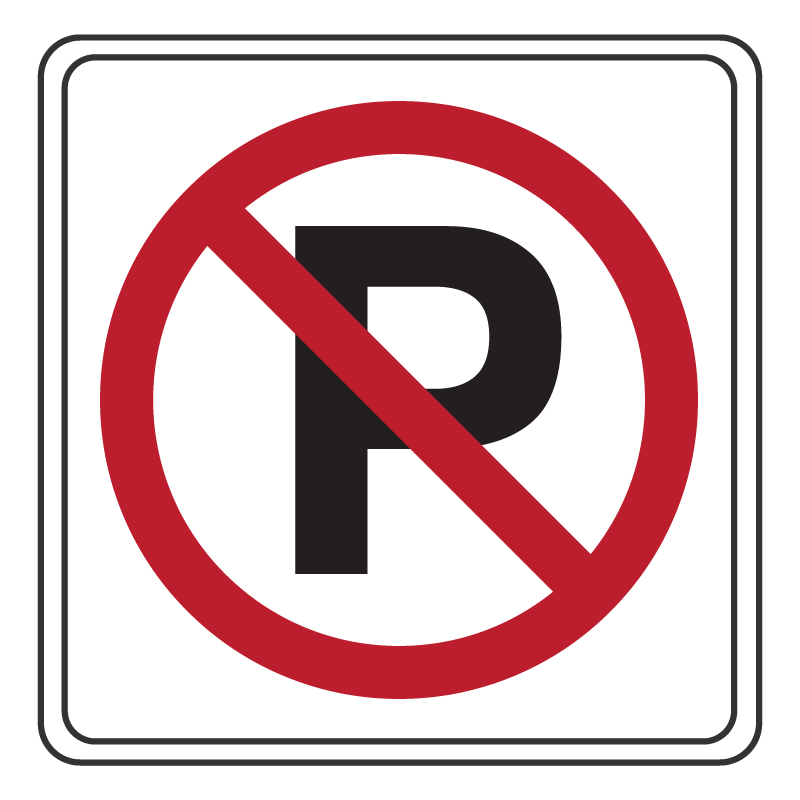
Check for signs or painted curbs that may ban or limit parking. Colored curb markings indicate some no-parking zones.
Parallel Parking
WHEN INITIATING A PARALLEL PARK:
- Find a parking space. Check traffic, signal, and head check.
- Pull up parallel to the vehicle you are parking behind.
- When traffic is clear, shift to reverse and look to the rear.
- Back slowly while turning the steering wheel quickly. Continue backing until your front bumper is in line with the rear bumper of the vehicle you are parking behind.
- Keep backing slowly while turning the steering wheel rapidly. Center your vehicle in the space and stop before touching the vehicle’s bumper behind you. Shift to drive and adjust your position in the space. The vehicle should be no more than 12 inches from the curb.
- Ensure that your vehicle’s front bumper will clear the vehicle ahead. If not, shift to reverse and adjust.
- Put the vehicle in park and set the parking brake.
Perpendicular and Angle Parking
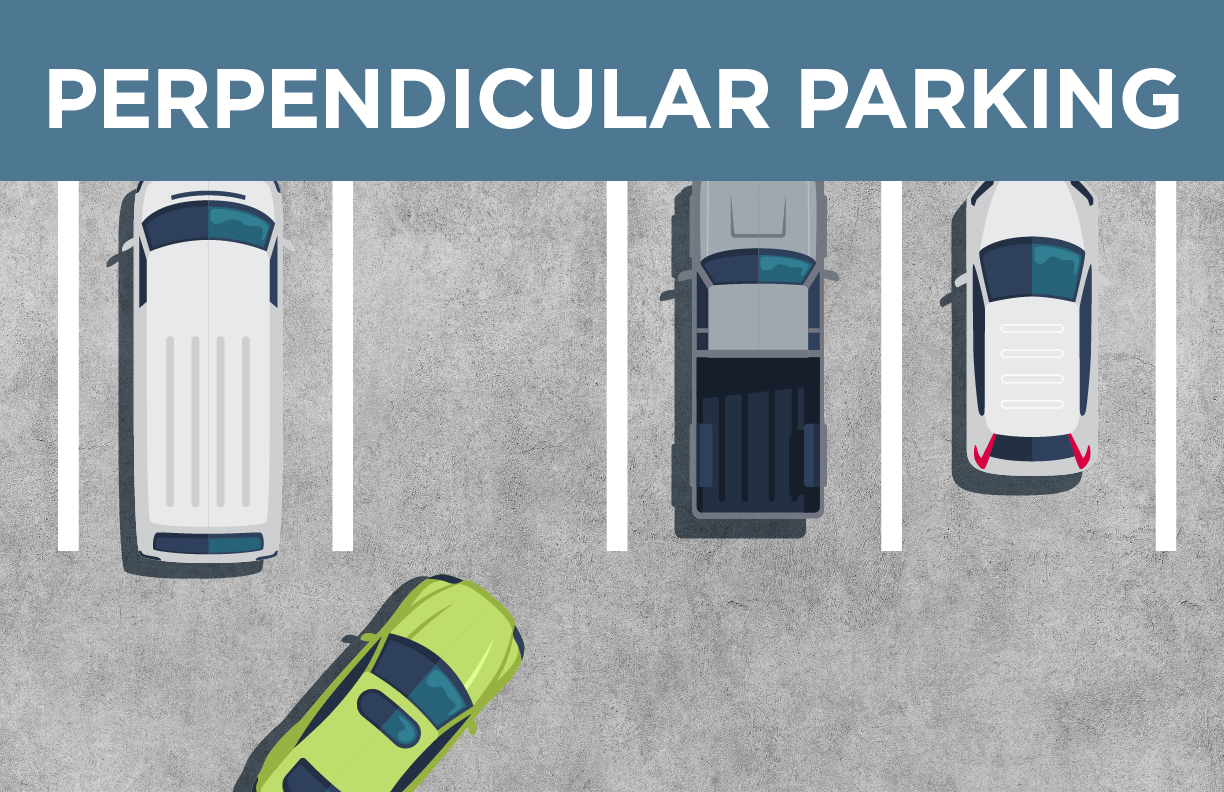
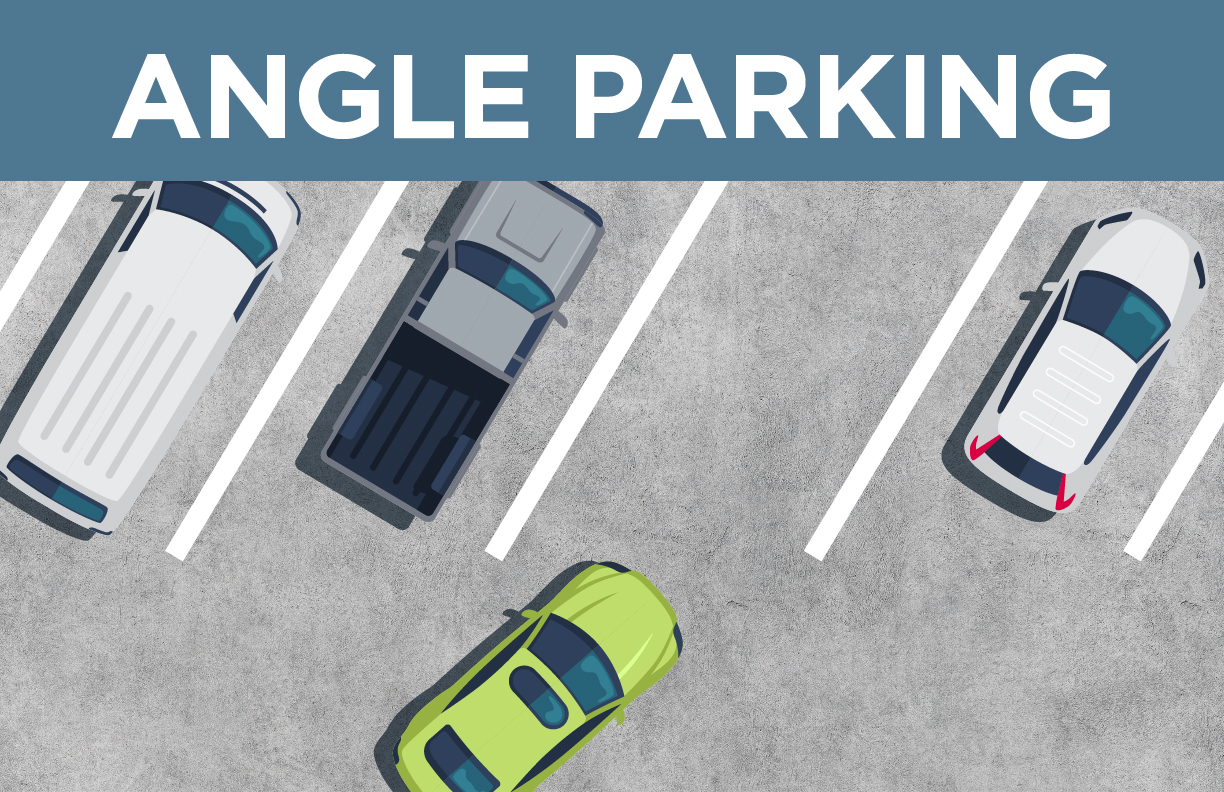
ENTERING A PERPENDICULAR PARKING SPACE:
- Identify the space in which you will park and check traffic.
- Signal your intentions.
- Move forward slowly, turning the steering wheel left or right as appropriate until the vehicle reaches the middle of the space.
- Center the vehicle in the space.
- Move to the front of the parking space, stop, and secure the vehicle.
EXITING A PERPENDICULAR PARKING SPACE:
- Check for traffic in all directions.
- Continue to check traffic and move straight back until your front bumper clears the vehicle parked beside you.
- Turn the steering wheel sharply in the direction that the rear of your vehicle should move.
- Stop and shift to drive when the vehicle clears the parking area space.
- Accelerate smoothly, steering as needed to straighten wheels.
